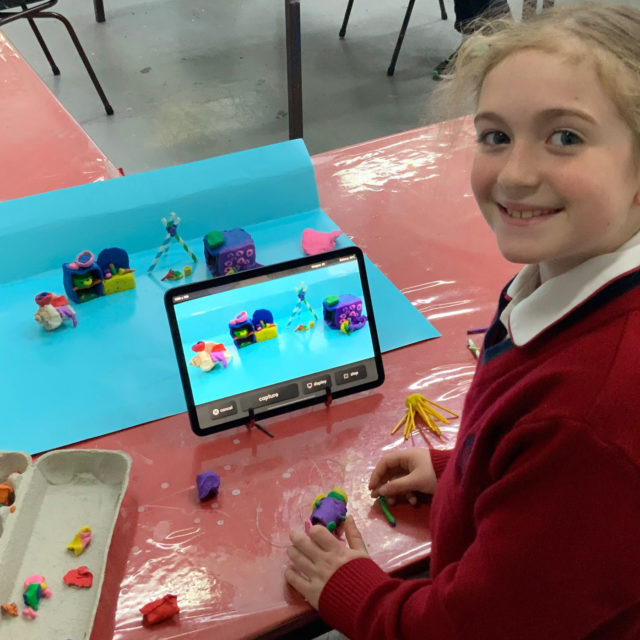Junior School news
Friday Claymation Club
Every Friday after school, a group of budding animators from Years 1 – 6 meet in one of the dedicated Art and Design spaces to model clay characters and objects to create funny and fabulous stop motion films. Working in pairs and small groups the students eagerly collaborate to share and exchange creative ideas for Claymation scenes. To create their projects, the students use iMotion, which is an intuitive and powerful time-lapse and stop-motion app. To edit and finalise their projects, they use iMovie.
Year 1 / 2 fruit fractions
Year 1 / 2 enjoyed a fruit fraction feast during Crunch and Sip. Students brought in a soft piece of fruit that they enjoyed cutting into halves, thirds, or quarters. This fruit was shared for a fantastic fruit feast!
Year 1 / 2 Spring art
Year 1 / 2 celebrated the first days of Spring by sketching leaves and flowers. Inspired by the beautiful blooms created by artist Georgia O’Keeffe, each student drew a magnificent flower.

How our brain works
by Ms Leanne Harrington
Our 3/4M class often uses movement and games in our Maths lessons. Once a week, we have a games afternoon where games are used as a revision of previous topics. Additionally, we have maths workstations where students practise the skills that we have been focusing on, throughout the week. These are always the activities the students look forward to the most. They are highly engaged, feel comfortable to experiment and safe to make mistakes during these games.
The reason we take this approach
In the last 30 years we have come to understand much more about how our brain works and how we learn. We know that the brain has plasticity, meaning it can change itself.
The brain is an expression of our genetic makeup, but it is not fixed at birth. Our neural connections can grow, change, and strengthen. A significant part of brain development happens as a response to our experiences, our relationships, and our environment.
New research suggests that pairing information using different senses can improve the strength of the concept being taught. This may mean using visuals to display information or including auditory and tactile information and physical movement.
Physical movement for learning
We do not do our best thinking while sitting. If you’ve ever experienced a mental block, you know that a quick walk can help us to refocus. For a child who has trouble sitting still in class, trying to stay still uses up a lot of mental energy. Energy which is better utilised learning in different settings.
Physical activity improves our focus, retention, memory, and mood. Researcher Harerimana Jean-Paul from Mount Kenya University found that when movement was incorporated into learning, 76% more was remembered (compared to when it was not incorporated).
There are many ways we can incorporate movement into the maths classroom. For example, through action chants to remember times tables, hopscotch to recall counting by multiples, creating clock faces with the body, bean bag addition, life-size number lines, and chalk-drawn board games.
Games for learning
There are many benefits to using games for learning. Games introduce repetition and help shape memory. They allow for instant feedback. Games improve intrinsic motivation.
When children are having fun while learning, the brain associates learning with pleasure and this in turn helps to broaden memory networks. This kind of learning is much more safe, supportive, and meaningful than a worksheet of sums. Using games allows children to relax and enjoy the process of learning.
Using these methodologies in teaching maths in the Junior School, we find optimises the children’s engagement and performance.

